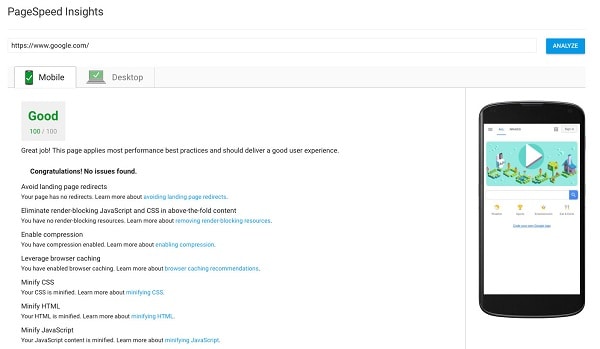Is Your Outdated Website Costing Your Business Revenue?

If
your
website
is
out-of-date,
it
can
prevent
your
business
from
growing
by
turning
away
clients
and
potential
employees
or
even
making
it
hard
for
your
company
to
be
found
on
the
web.
Reevaluating
and
replacing
old,
outdated
or
bad
parts
of
your
business
should
come
naturally
to
you.
It’s
obvious
that
if
your
equipment
breaks
down
or
starts
to
perform
badly,
you
replace
it
with
something
better
and
that
works.
Your
website
shouldn’t
be
any
different.
When
you
find
a
better
process
or
your
current
process
is
holding
the
company
back,
you
reassess
and
go
a
different
way.
The
same
line
of
thinking
should
be
applied
towards
your
company
website.
In
today’s
digital
world,
an
outdated
website
could
be
costing
you
money,
and
big
time. Keep
reading
to
learn
why.
Don’t
Want
to
Update
Your
Website?
It
can
be
easy
to
just
leave
your
website
alone
and
let
it
get
older
and
older
without
any
updates.
You
may
think:
- “I feel like we just redesigned it a few years ago.”
- “It cost us a bunch of money the last time.”
- “We just have one because we felt like we should – most of our business comes from referrals anyway.”
Unfortunately,
the
more
out-of-date
your
website
becomes,
the
more
it
could
be
costing
you
revenue.
Now
a
days
people
use
the
internet
to
make
most,
if
not
all,
of
their
big
decisions
and
purchases,
even
for
their
businesses.
This
makes
your
company’s
website
and
online
presence
extremely
important
if
you
want
to
be
successful
as
technology
advances.
You
could
be
making
a
lot
more
money
than
you’d
think.
Also,
when
your
website
is
outdated,
old,
or
not
able
to
be
updated,
it
can
actively
hurt
your
ability
to
grow
as
a
business.
There
are
two
major
ways
in
which
your
outdated
website
could
be
costing
you
money
and
business:
either you
can’t
be
found,
or
when
you
are
found, you’re
repelling
customers.
You’re
Losing
Revenue
Because
of
Your
SEO
Search
engine
optimization
(SEO) is
a
general
term
used
for
a
variety
of
optimization
strategies
that
help
your
website
rank
well
in
internet
search
engines.
Unless
you
have
no
competitors
at
all,
SEO
for
your
website
is
necessary
to
help
your
rank
and
be
found.
If
your
website
is
older
or
outdated,
it
can
really
affect
your
SEO.
There
can
be
many
reasons
for
this.
Maybe
your
current
platform
makes
SEO
impossible,
or
your
site
is
too
slow
or
its
non-responsive
or
not
mobile-friendly.
It
could
also
be
at
risk
of
hackers.
Check
out
these
points
explained
more
in
detail
below:
1) Your
Platform
Makes
SEO
Impossible
Ask
yourself
this
question:
if
you
wanted
to
change
something
on
the
website
as
it
is
now,
could
you?
Do
you
have
a
webmaster
who
makes
updates
for
you?
Has
your
site
been
quiet
for
some
time?
Can anyone access
the
site
right
now?
If
it’s
been
years
since
you
built
or
updated
your
website
it
might
be
so
old
that
it
just
doesn’t
work
with
how
website
are
currently
designed.
Your
site
might
also
be
built
on
a
platform
that
makes
it
hard
for
even
experienced
search
engine
optimizers
to
attempt
to
optimize
the
website.
Or
maybe
no
one
at
your
company
even
remembers
how
to
log
in
and
change
anything.
Being
able
to
update
information
and
add
content
is
essential
to
SEO
and
for
your
website
to
be
easily
searchable.
When
your
site
is
too
old
or
built
on
a
bad
platform,
no
one
is
going
to
find
your
business.
How Can I Tell if My Website’s Platform is Outdated?
Well,
ask
yourself
and
your
staff
this:
have
we
logged
in
and
changed
anything
in
the
last
month?
Six
months?
Year
or
more?
The
longer
that
period
is,
the
more
likely
your
site
is
outdated
and
if
no
one
can
remember
the
log
in
info
to
get
into
the
website,
that’s
a
problem.
2) Your
Site
Loads
Slowly

No
one
likes
a
slow-loading
website.
It’s
happened
to
us
all.
You
go
to
a
website
and
have
to
wait
ages
for
it
to
finally
load,
or
even
worse,
you
think
it’s
loaded
and
go
to
click
but
the
page
jumps
because
something
else
finally
loaded
–
it’s
incredibly
frustrating!
Well, slow loading times on your company’s website aren’t just annoying for your visitors, it’s also bad for search rankings. Search engines like Google want to show only the best websites to their users, so if they show sites that are too slow and take too long to load, their users will get annoyed and go use another search engine like Yahoo instead.
This means that if your site loads slowly, Google will prioritize other websites over your slow one. As your competitors update and refresh their websites, they’ll get faster, basically leaving you behind while yours gets slower and slower. Eventually your site may be pushed down to the second or third pages of search results and that’s not good considering sites ranking on page 1 see nearly 95% of traffic. You want to be on page 1!
How
Can
I
Tell
if
My
Website
is
Too
Slow?
The
easiest
way
is
to
use Google’s
PageSpeed
Tool.
Type
in
the
URL
of
your
website
and
click
“Analyze.”
This
will
give
you
an
analysis
of
the
speed
of
your
website
from
Google
themselves.
If
the
number
they
give
you
is
lower
than
60,
you
need
to
do
a
website
update.

3) Your
Website
Is
Not
Responsive
or
Mobile-Friendly

“Mobile
responsive”
or
“mobile-friendly”
are
terms
that
describe
sites
that
react
and
resize
themselves
to
navigation
on
mobile
devices
like
tablets
and
smartphones.
Mobile responsive sites started to become popular with the rise in mobile devices and mobile browsing. Over the last few years mobile responsive websites have gone from an option to a must.
Why? In 2015, the majority of internet traffic went from desktop to mobile, and that changed how Google ranks websites. Google prioritizes sites that are mobile-friendly or mobile responsive over ones that are not. While Google lists mobile sites over desktop-only sites, it is making it harder and harder for your non-mobile-friendly website to be found.
How Can I Tell if My Website is Mobile Responsive or Mobile-Friendly?
Pull up your website on your smartphone’s browser. If everything is small and if you have to zoom in to look at anything, and if all of the links are hard to select with your fingers – basically if it looks like your desktop website but shrunken – your site is not mobile-friendly or responsive.
4) Your
Site
Can
Be
Easily
Hacked

Website hacking didn’t end in the 1990s with movies like Hackers. Even today hackers are still a potential threat to your website.
What’s a hack? If your company website has been hacked, it means that someone outside the company has gained access to your site illegally and with the intent to install malicious code on your site, on other’s computers, or to even hold your website for ransom. They can also gain access to your clients or customers data. Big trouble.
Hacks can be done many ways, but two of the easiest ways for your website to be hacked is either through giving out private security information to unverified parties or by letting your site get old, making it easier for hackers to get past its outdated security features.
So
what
does
getting
hacked
have
to
do
with
being
shown
in
the
search
engines?
Due
to
this
rise
in
hacked
websites,
Google
has
started
to
prioritize
secured
websites
over
unsecured
ones.
Websites
can
be
secured
with
the
installation
of
an
SSL
certificate,
which
encrypts
the
data
on
your
site
through
a
secure
remote
server,
and
protects
both
you
and
your
visitors’
private
information.
This
is
why
2017
was
referred
to
sometimes
as
the “year
of
SSL
certificates” as
Google
started
to
prioritize
websites
that
had
an
SSL
certificate
over
unsecured
sites
that
did
not.
How
Can
I
Tell
if
My
Website
Has
an
SSL
Certificate?
That’s
easy.
Take
a
look
at
the
URL
–
if
it
says
“https”
at
the
beginning
instead
of
just
“http”
you
have
an
SSL
certificate
installed.
If
you
don’t
have
an
SSL
certificate,
have
your
IT
department
install
one,
and
stat.
You’re
Losing
Revenue
Because
Your
Site
is
Repelling
Customers
If
by
some
miracle
your
outdated
website
does
land
on
the
page
1
of
Google,
or
another
search
engine,
people
still
may
be
leaving
your
site
to
look
for
a
better
one.
Out-of-date
or
even
ugly
looking
websites
can
turn
off
visitors
for
several
reasons:
either
because
the
old
look
is
unappealing
or
dated,
it’s
hard
to
navigate
the
site,
or
the
site
doesn’t
provide
the
answers
for
which
they
were
looking
for.
5) Your
Website
Is
Ugly
or
Old-Looking:

We
all
know
that
appearance
is
important,
even
though
it
might
be
uncool
to
say
so.
If
you
are
hiring
someone
to
do
a
job
and
they
show
up
in
dirty
clothes
with
bloodshot
eyes
and
smelling
like
a
brewery,
it
probably
wouldn’t
matter
how
great
their
resume
looked,
you
just
wouldn’t
hire
them.
Even
in
professions
where
you
do
get
dirty
and
smelly,
it’s
still
expected
that
job
candidates
at
least
look
presentable
during
the
interview
process.
The
same
can
be
said
with
the
appearance
of
your
company
website.
If
your
site
looks
ugly
or
even
dated,
your
potential
customers
will
not
want
to
work
with
you
no
matter
how
great
your
deals
are
or
how
convincing
your
content
is.
Your
site
must
be
an
extension
of
your
professionality
so
you
should
keep
it
modern
and
appealing.
Add
video
content
as
well.
With
all
the
social
media
channels
out
there,
people
are
all
about
visuals
these
days.
It
is
especially
important
for
businesses
who
have
updated
the
look
and
appearance
of
their
brand
to
also
update
their
website.
Customers
expect
a
flawless
transition
between
all
branches
of
a
business’
rebranding
marketing
materials.
That
means
that
the
sign
outside
your
building,
the
ads
you
buy,
the
commercials
you
run,
the
business
cards
you
hand
out,
and
especially
your
company
website
should
all
look
as
though
they
go
together.
How
Can
I
Tell
If
My
Website
Looks
Ugly?
Look
at
a
competitor
that
has
updated
their
website.
Compare
your
site
to
theirs.
Does
it
look
more
inviting
and
attractive?
Is
it
easier
to
read?
Are
you
jealous
of
how
it
looks?
Are
you
kind
of
embarrassed
to
give
customers
your
URL?
If
so,
you
might
have
an
ugly
website.
6) Your
Website
is
Hard
To
Navigate:

Website
navigation
is
tricky:
when
it’s
great,
you
don’t
notice
it
and
when
it’s
bad,
it’s
bad
and
can
ruin
everything.
By
navigation,
we’re
talking
about
the
links
on
the
page
that
help
users
get
from
one
page
to
another.
Bad
or
broken
links
on
your
website
means
that
your
users
can’t
get
to
the
information
that
they
need
or
can’t
get
back
to
pages
that
they’ve
already
seen.
A
well-designed
navigation
will
appear
organized,
structured,
and
gives
your
users
a
roadmap
throughout
your
website.
They
have
sticky
menus
on
every
page
that
hold
the
more
important
links
on
the
site
and
will
correctly
show
the
parent
pages
if
you’ve
navigated
through
several
levels
of
content.
Common
on
older,
outdated
websites
are
broken
links.
Broken
links
can
occur
from
many
issues
–
either
content
gets
moved
to
a
new
URL
and
the
links
aren’t
redirected
or
an
update
happens
that
messes
up
how
the
links
were
put
in.
Regardless,
a
website
that’s
full
of
broken
links
is
annoying
and
unattractive
to
a
user.
They
will
more
than
likely
be
aggravated
and
go
find
a
competitors’
website
to
deal
with.
How Can I Tell If My Website is Hard to Navigate?
Ask a friend who has never used your site to try it out and find something on the page. They’ll tell you pretty quickly if it’s hard to use or difficult to navigate through.
7)Your
Website
Doesn’t
Deliver
on
Its
Promise:
Broken
promises
are
super
frustrating!
In
the
same
way,
if
the
content
on
your
website
is
incorrect,
outdated
or
doesn’t
provide
answers
customers
are
promised,
it
can
be
frustrating
to
the
customer.
It
also
creates
negative
feelings
associated
with
your
company
and
brand.
Think about this: suppose you’d clicked on an article titled “Is Your Outdated Website Costing You Revenue?” Based on the title, you’d expect that the article would tell you about the ways in which an outdated website would cost your business revenue and why, right? But if you clicked on that article and all it said was “older websites will cost you revenue, but if you contact us, we’ll make you a better website!” you would feel deceived and as though you were only being sold something – this leaves the user with negative feelings towards your company.
Outdated or bad content, video or writing, on your site can draw people in, but it can deter them just as quickly. Even worse, if your website shows that it’s been a while since it was updated, everyone will think that you aren’t trying when it comes to your website’s content. Customers will wonder what’s going on with you or if you’re even open anymore.
Nobody wants to hire the company that’s behind the times, and when your website is older-looking with outdated platforms or trends and bad content from years ago, it makes your business look unknowledgeable and out of date.
How
Can
I
Tell
if
My
Website’s
Content
is
Out
of
Date?
It’s pretty obvious. If you know your website hasn’t been updated in a while, say six months or longer, then it’s pretty safe to say that it’s content is out of date. But, if your industry’s practices tend to change from time to time, it’s always a good idea to review your content periodically to check if anything is incorrect or obsolete.
Be honest with yourself. Your website is out of date. Updating the look, the SEO, and the content of your site can have significant and positive results on your revenue. Updating your dated website doesn’t need to be hard. You just need to get started.
For
any
and
all
of
your
video
marketing
needs,
visit
us
at ultimo-media.com.
